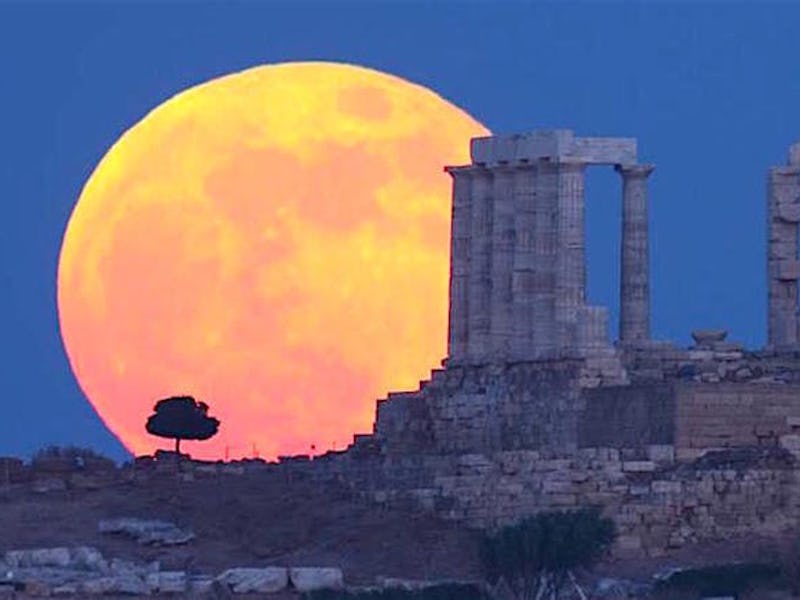Why the Bloody Moon in Viral Poseidon's Temple Photo Looks So Big
It’s an illusion. Mostly.

A giant, bloody moon appeared in the night sky over Europe, Africa, and Asia on August 7. In an image that has gone viral, a photographer captured the moon’s pronounced size as it hovered above the Temple of Poseidon in Athens, Greece.
The moon’s crimson appearance was very real, as it was caused by a lunar eclipse. The moon’s curious enlargement, however, was an illusion.
The perceptual phenomena is sometimes called the “moon illusion,” and it occurs when we view the moon close to the horizon. When the moon drops down to the horizon, it’s still the same distance from Earth, but we can’t help but view it relative to other objects, like trees and temples. When our brains compare this (admittedly massive) space rock to common objects, it looks much larger.
The below example proves the point. At first glance, the orange ball on right looks bigger than the orange ball on the left. They’re the same size, but the orange ball on the right looks bigger because it’s surrounded by smaller grey balls.
Additionally, often when we view things on the horizon, they appear diminutive. We’ve come to expect this because these objects are truly far off, like a distant boat in the ocean. The moon, however, will often appear on the horizon, but it is not any farther away and does not get smaller. Perceptually, this also makes the moon seem larger than what we would expect.
Those that think the moon looks bigger because it’s closer, however, aren’t completely wrong: The moon is pretty darn close to Earth right now. The moon has an elliptical orbit around Earth, meaning its distance varies between around 221,000 miles away to some 250,000 miles away. As of August 7, the moon was around 225,000 miles from Earth — a pretty close distance. These fluctuations in distance, however, occur incrementally over months. They are mostly imperceptible when the moon is viewed far above the horizon.
As for the moon’s bloodied appearance, a typical lunar eclipse is to blame. A lunar eclipse occurs when the Earth is aligned between the sun and the moon. In these cases, the moon is in the Earth’s shadow, and most of the sun’s light is absorbed by Earth’s atmosphere. But the longest wavelengths of visible light, which are reddish, are able to bend around Earth, and get projected onto the moon.
This “massive,” bloody moon will soon be followed by a total solar eclipse. This rare cosmic event will shroud a 70-mile wide path of the United States in darkness on August 21.